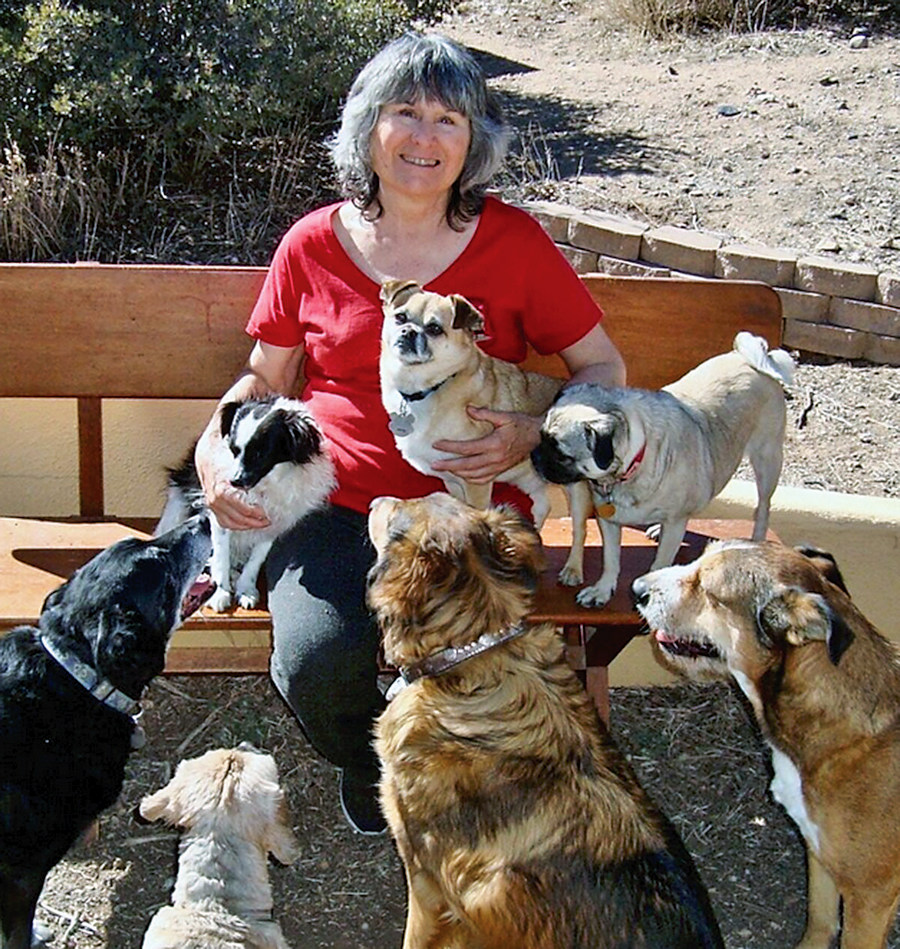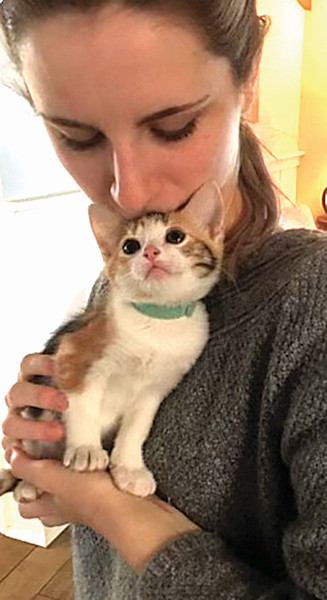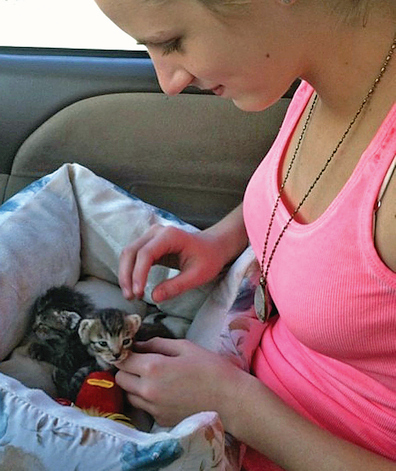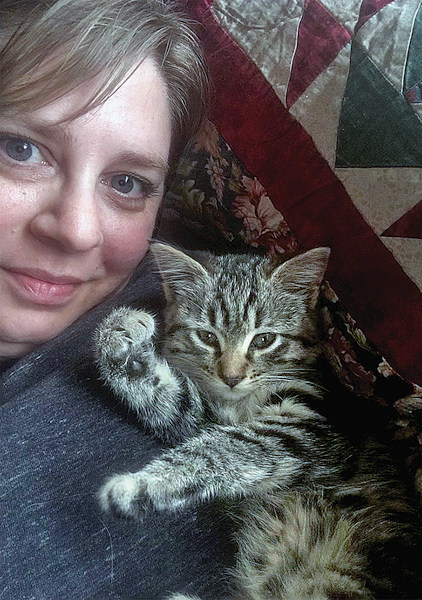What you need to know to help animals in need
By Heidi Dahms Foster
Not all area rescues have shelters, but both those with shelters and without save hundreds of animals every year by supporting a large network of foster volunteers.

Toby Frost is a rescue founder and foster volunteer of 20 years. She now volunteers with Yavapai Humane Trappers, an organization that both searches for and traps lost and injured pets, successfully returning most to their grateful owners, and that rescues animals in need.
With her husband Ray, Frost has lost count of the numbers of animals the couple has fostered. “When a foster gets into a solid home, we’re right there to save another. Fostering just perpetuates saving lives.”
Leanne Mayotte, with her daughter Shannon, has been fostering cats and kittens, and the occasional dog, with the Yavapai Humane Society since 2015.
“We’re doing what’s best for them,” she said, “then finding the perfect home. Most of our fosters are strays and our job is to make them fat, happy, and adoptable.”
YHT, incorporated in 2017, is totally dependent on its network of foster volunteers. Katrina Karr and Frost divide the duties, with Karr handling the search and rescue and trapping, and Frost the foster care.
The Yavapai Humane Society does have a shelter, but some animals don’t do well in that environment, and foster care is the best scenario for them. Mayotte urges people who are thinking about fostering to take the plunge.
“It’s the most rewarding thing to see a kitten that is completely helpless, that can’t even go to the bathroom by itself, grow and thrive, and the joy it brings to the family who adopts it,” she said.
Both YHT and the Humane Society take in every age group from bottle fed puppies and kittens to adult dogs and cats. Some of the fosters have special medical needs because of injuries or treatable diseases. The need is great and animal lovers are often drawn to help, but are perhaps not sure for a number of reasons if they can handle fostering.
The two organizations work to fit the animal in need to the foster volunteer. Both ask those who are interested to go their websites and fill out a volunteer application. Then, potential fosters can find the answers to their biggest questions. Here are some of the most common concerns:
“I could never foster because I would want to keep them all.”

Frost admits that most fosters probably do end up with what is fondly termed a “foster failure.” But it’s really a foster win, because a deserving pet has found a forever home.
There is no obligation, and in fact, in a multiple foster situation, YHT does not allow for adoption of two dogs from the same litter. The foster gets first dibs on a pup, and YHT assists in getting the other(s) rehomed.
Mayotte said her daughter Shannon did adopt one cat. Fergus joined the family permanently. But she and her family were aware from the beginning that fostering is temporary.
“We both love cats, and we can’t have all we want, so it’s nice to take care of a cat or kittens that need to be taken care of, find good homes, take a break and start all over again.”
The Mayotte’s first foster situation started with a family in Phoenix that had to move and didn’t know their cat was pregnant. As the family was loading up, the mother cat escaped, leaving two one-week old kittens. The family stayed three days looking for the mother, and then asked for help from someone who could take the two bottle babies.
“It was a first everything for us,” Mayotte said. “We were rookies. But we fell in love with fostering. That’s when we contacted the Humane Society, and became a part of this amazing community.”
“Fostering will be tough on my kids.”

Kids learn quickly to love and let go, a lesson that Frost feels helps them in all relationships throughout their lives. “What an amazing lesson to teach kids, that you don’t have to keep every one. You love them, nurture them, build up their confidence and training, and then let go.” Children and adult foster volunteers have the satisfaction that they helped nurture a pet into a successful relationship with another person.
Frost adds that YHT carefully chooses the permanent homes for its foster pets, and has a firm policy that if a placement does not work out, the animal is returned to YHT. “This gives the foster volunteer some confidence in letting go and knowing that their foster pet will be OK. Then they can go out and save another.”
Mayotte said her children never struggled with seeing fosters leave when they were ready for adoption, beyond a little sadness.
“They knew we weren’t keeping the kittens. I would take the kids to the Humane Society to pick litters to foster, or bring them home and they’d be there after school. The kids knew we weren’t keeping the kittens, but they loved them just as much. They knew the kittens were going to go to a good home. They understand the responsibility of an animal, they see the work involved, and they know it isn’t to be taken lightly.”
“I don’t have the time.”
Both Frost and Mayote are honest that fostering requires a time commitment, but some animals need more time than others. That’s why fitting the foster animals to the right volunteers is so important.
“We all have busy lives, and people wonder where they can fit a foster in,” Frost said.
Those with an extremely busy work or child care schedule may find fostering is an overwhelming commitment. Frost said fosters can be placed in homes with those who work full time if a couple’s work shifts are different, or older kids get off school early and can help.
Bottle babies are the most labor intensive, Mayotte said, because they must be fed and cared for every two to three hours around the clock. But there are less intensive foster opportunities. “The easiest cat to foster is a mom with kittens. She does all the work – you feed and change the litter box. Even someone with a full-time job could easily do that,” she said.
Frost suggests that animal lovers who don’t have the time to foster a pet may still enjoy volunteering by handling dogs at adoption events, or working with the search and rescue arm of YHT. Rescues have a vast number of volunteer needs, in which volunteers can enjoy caring for animals without the extensive time commitment.
“I’m not sure I could afford to foster a pet.”

Both YHT and Yavapai Humane Society cover medical costs for their fosters, unless the foster volunteer has the means and the desire to donate some or all of the cost. They will assist with food although foster volunteers generally provide that. Medical needs for fosters that come in with injuries or treatable diseases are covered, as is spay and neuter before the foster is adopted.
Some volunteers are able to care for fosters with medical needs, and others are willing to learn, Frost said. “We had a kitten that a newer volunteer had picked up. She was mortified at the condition of the animal, thinking it might not survive the night. I went to her house and set her up to give fluids, and medications. She called later that day in tears to say the kitten had made great improvement and had turned into a different cat. It was a win-win for everyone, an opportunity to save a precious little life.”
What if my injured or sick foster doesn’t recover?
“There are risks,” Frost said. “Sometimes we do get an animal so close to the edge – emaciated or with injuries. It’s kind of a microcosm of life, there are disappointments and deaths. But not trying is far worse. You’re hooked after a few successful fosters, like seeing that little kitten go from night to day, eating and turning into a lively little furball.”
“Do I have all the skills and the home I need?”
Fostering depends on the animal and its needs. Rescues hope for fosters to teach a pup to walk on a leash, help them become more social and at ease in public, learn to be around older children, ride in a car, and get used to household noises such as vacuums, dishwashers, radios, other pets and general household routines.
A fenced yard is a must and cats must be kept indoors. Cats need to experience the home routine, learn household manners, and often, getting along with safe dogs is a big bonus.
Frost is careful to note that while YHT is always looking for more good foster volunteers, it isn’t the only rescue with foster needs. “Pick a group that models your idea of a good rescue and help that group,” she said.
Mayotte is exceptionally happy with her experience at Yavapai Humane Society. “They take amazing care of their volunteers,” she said.
Contacts
Yavapai Humane Trappers yavapaihumanetrappers.org
Foster coordinator
Toby Frost, 928-899-3942
Yavapai Humane Society
928-445-2666
Find a list of other available foster and volunteer opportunities in the Rescue Resource in this magazine,
or at prescottdog.com.

